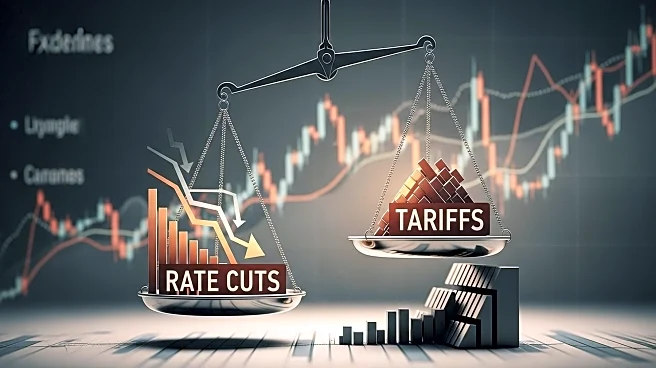What's Happening?
J.P. Morgan Global Research forecasts an increase in global core inflation to 3.4% in the second half of 2025, primarily driven by a tariff-related spike in the United States. The report highlights a synchronized downshift in global growth to 1.4%, influenced by U.S. policies that have led to a decline in global business sentiment. While cost pressures are expected to be concentrated in the U.S., inflation in other regions, particularly Europe, is anticipated to moderate. The U.S. Federal Reserve is expected to remain cautious in response to these stagflationary pressures, potentially responding quickly to signs of labor market weakness.
Why It's Important?
The projected increase in U.S. inflation due to tariffs could have significant implications for the U.S. economy, affecting consumer prices and potentially leading to a decrease in purchasing power. This situation may compel the Federal Reserve to adjust its monetary policy, impacting interest rates and economic growth. Businesses reliant on imports may face increased costs, affecting their competitiveness. The broader global economic landscape could also be affected, as U.S. economic policies influence international trade dynamics and business confidence.
What's Next?
The Federal Reserve's response to these inflationary pressures will be closely watched, as it balances the need to control inflation with the risk of stifling economic growth. Businesses and consumers may need to adjust to higher prices, and policymakers will likely face pressure to address the economic impacts of tariffs. The potential for further central bank easing in other regions could also influence global economic conditions.










